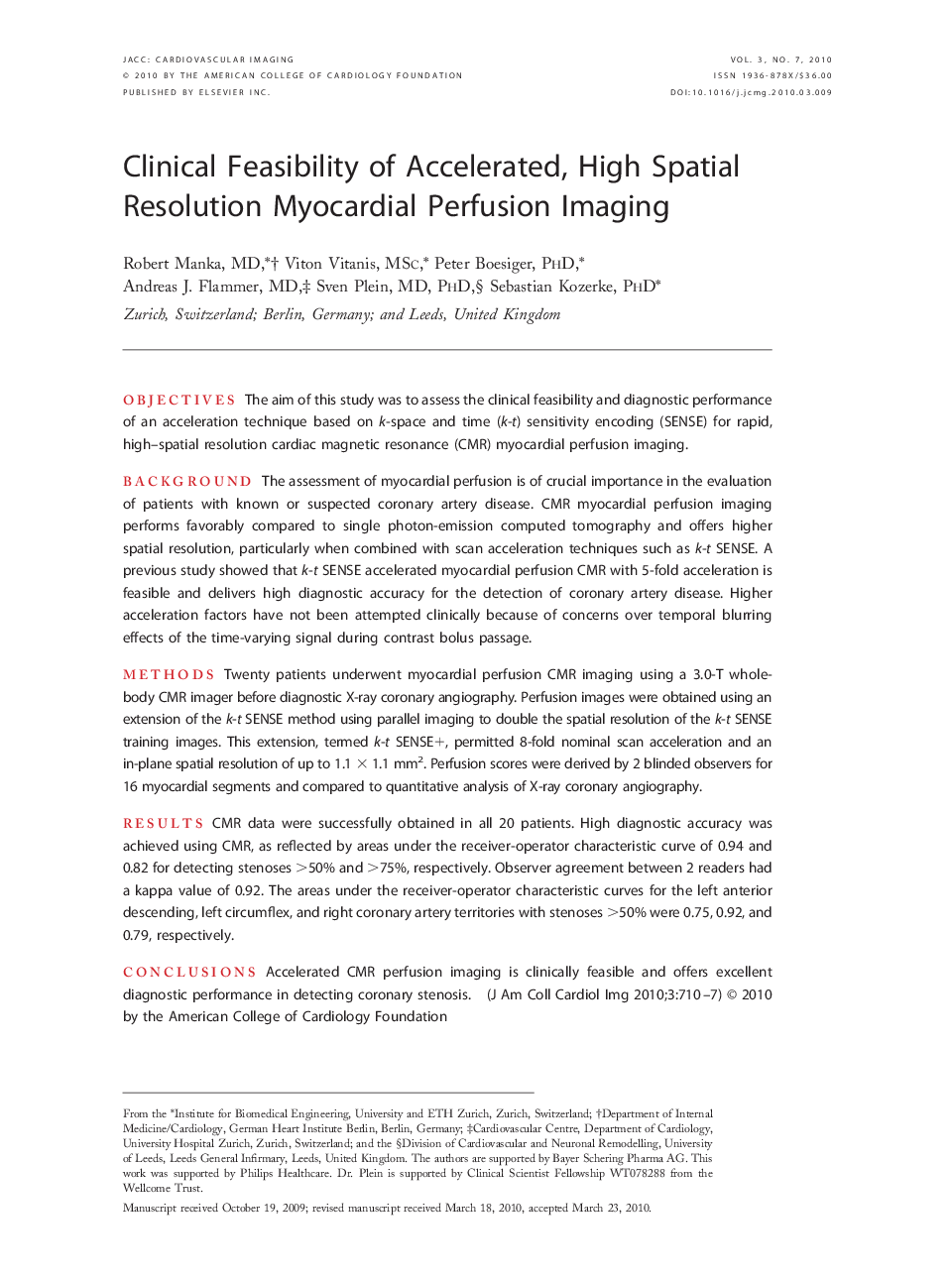| کد مقاله | کد نشریه | سال انتشار | مقاله انگلیسی | نسخه تمام متن |
|---|---|---|---|---|
| 2939090 | 1176972 | 2010 | 8 صفحه PDF | دانلود رایگان |

ObjectivesThe aim of this study was to assess the clinical feasibility and diagnostic performance of an acceleration technique based on k-space and time (k-t) sensitivity encoding (SENSE) for rapid, high–spatial resolution cardiac magnetic resonance (CMR) myocardial perfusion imaging.BackgroundThe assessment of myocardial perfusion is of crucial importance in the evaluation of patients with known or suspected coronary artery disease. CMR myocardial perfusion imaging performs favorably compared to single photon-emission computed tomography and offers higher spatial resolution, particularly when combined with scan acceleration techniques such as k-t SENSE. A previous study showed that k-t SENSE accelerated myocardial perfusion CMR with 5-fold acceleration is feasible and delivers high diagnostic accuracy for the detection of coronary artery disease. Higher acceleration factors have not been attempted clinically because of concerns over temporal blurring effects of the time-varying signal during contrast bolus passage.MethodsTwenty patients underwent myocardial perfusion CMR imaging using a 3.0-T whole-body CMR imager before diagnostic X-ray coronary angiography. Perfusion images were obtained using an extension of the k-t SENSE method using parallel imaging to double the spatial resolution of the k-t SENSE training images. This extension, termed k-t SENSE+, permitted 8-fold nominal scan acceleration and an in-plane spatial resolution of up to 1.1 × 1.1 mm2. Perfusion scores were derived by 2 blinded observers for 16 myocardial segments and compared to quantitative analysis of X-ray coronary angiography.ResultsCMR data were successfully obtained in all 20 patients. High diagnostic accuracy was achieved using CMR, as reflected by areas under the receiver-operator characteristic curve of 0.94 and 0.82 for detecting stenoses >50% and >75%, respectively. Observer agreement between 2 readers had a kappa value of 0.92. The areas under the receiver-operator characteristic curves for the left anterior descending, left circumflex, and right coronary artery territories with stenoses >50% were 0.75, 0.92, and 0.79, respectively.ConclusionsAccelerated CMR perfusion imaging is clinically feasible and offers excellent diagnostic performance in detecting coronary stenosis.
Journal: JACC: Cardiovascular Imaging - Volume 3, Issue 7, July 2010, Pages 710–717